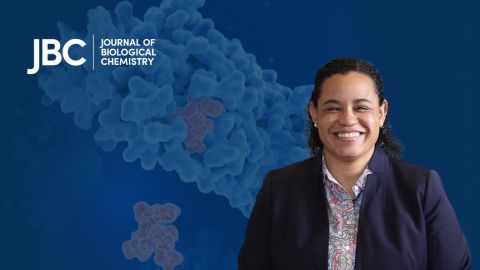Gut microbes could be key for cancer therapies
Microorganisms produce substances that play a role in several of the human body’s metabolic processes. In some cases, the specific function and mechanism of action of these metabolites still mystify scientists. Uncovering these mysteries could lead to groundbreaking targeted therapies for cancer and other diseases.
The short-chain fatty acid butyrate is a bacterial metabolite involved in intestinal homeostasis that serves as a source of energy and initiates differentiation in epithelial cells. Because low cell differentiation is a characteristic of cancer cells, cancer researchers try to understand how bacterial metabolites such as butyrate affect epithelial cell differentiation and molecular phenotype.

Katarina Madunić and a team of scientists in the Netherlands investigated the effect of bacterial butyrate on glycosylation and differentiation in an epithelial cell line derived from a human colorectal carcinoma in 1977 and known as Caco-2. They recently published their findings in the journal Molecular & Cellular Proteomics.
Mass spectrometry, or MS, separates molecules based on their mass-to-charge ratio and is frequently used to study metabolites. However, Madunić’s team was analyzing glycans that had identical masses, so the usefulness of MS was limited. To overcome this limitation, they used a unique separation technique called porous graphitized carbon nano-liquid chromatography with electrospray ionization tandem MS.
Manfred Wuhrer, the corresponding author of the study, explained that this method uses a “high-end charcoal variant that separates the sugars one by one, hence resolving the isomers for mass spectrometric characterization.”
This unique approach was pioneered by a group of Australian researchers who published about it in 2004. It proved to be a technique that Madunić’s team could build upon for their investigations.
The researchers were surprised to find that the glycosylation of differentiated cells from the CaCo-2 cell line was substantially different from the glycosylation of other differentiated colorectal cell lines from their previous work.
Madunić said this finding “made us look into the changes in the cell proteome, from which we formed interesting hypotheses about the importance of glycan building block availability in the cell culture media influencing the cell glycosylation changes.”
In this study, the researchers wanted to investigate changes in glycosylation that occurred during differentiation in a particular cancer cell line. They did so, identifying specific O-glycans along with specific protein expressions that mark butyrate-induced versus spontaneous epithelial cell differentiation.
These findings are a step toward creating a repository of cancer-implicated metabolic and associated glycomic signatures. Such a repository can be used to further study the pathophysiology of various cancers and, consequently, to help develop targeted cancer therapies.
In future studies, the researchers hope to use more robust multiomics analysis to provide more depth to their findings and provide more mechanistic insights, Wuhrer said.
“We would like more information on the cellular metabolic signature and the expression of the glyco-genes, which shape the O-glycans. How is this evolving and changing upon bacterial metabolite exposure?”
Enjoy reading ASBMB Today?
Become a member to receive the print edition four times a year and the digital edition monthly.
Learn moreGet the latest from ASBMB Today
Enter your email address, and we’ll send you a weekly email with recent articles, interviews and more.
Latest in Science
Science highlights or most popular articles

Innovative platform empowers scientists to transform venoms into therapeutics
Scientists combine phage display and a “metavenome” library to discover new drugs that bind clinically relevant human cell receptors. Read about this recent Molecular & Cellular Proteomics paper.

Meet Shannon Reilly
The JLR junior associate editor discusses the role of adipocytes in obesity at Weill Cornell Medical School.

Meet Donita Brady
Donita Brady is an associate professor of cancer biology and an associate editor of the Journal of Biological Chemistry, who studies metalloallostery in cancer.

Glyco get-together exploring health and disease
Meet the co-chairs of the 2025 ASBMB meeting on O-GlcNAcylation to be held July 10–13, 2025, in Durham, North Carolina. Learn about the latest in the field and meet families affected by diseases associated with this pathway.

Targeting toxins to treat whooping cough
Scientists find that liver protein inhibits of pertussis toxin, offering a potential new treatment for bacterial respiratory disease. Read more about this recent study from the Journal of Biological Chemistry.

Elusive zebrafish enzyme in lipid secretion
Scientists discover that triacylglycerol synthesis enzyme drives lipoproteins secretion rather than lipid droplet storage. Read more about this recent study from the Journal of Biological Chemistry.

